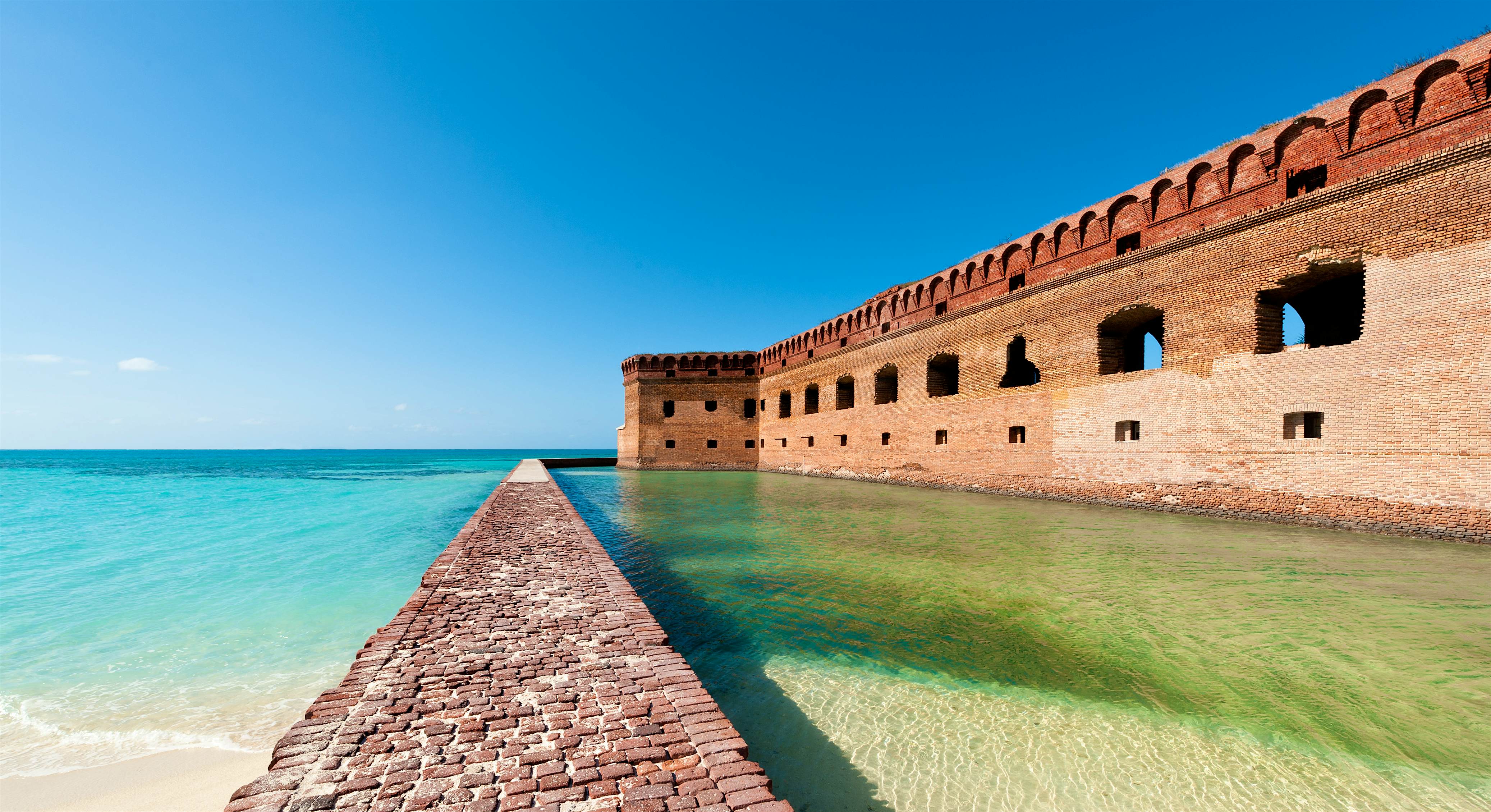Nearly everyone has heard of Yosemite and Zion, but there are more than 400 sites in the United States’ National Park System, 60 of which have earned the official national park designation. If you’re looking to escape the crowds, consider one of the underrated parks on our list.
North Cascades, Washington

Despite the abundant photos of mountain vistas and placid lakes on Instagram, North Cascades National Park remains one of the least visited. Less than three hours from Seattle, the park’s accessibility and remote, alpine landscape make it an easy escape for both day hikers and backpackers. Diablo Lake and Desolation Peak are a couple of noteworthy routes with dramatic views. Though summer is prime visitation time, there are a few facilities that remain open year-round.
Congaree, South Carolina

The lesser-known alternative to the Great Smoky Mountains, Congaree National Park’s sprawling hardwood forest and rich biodiversity make it a hiker’s paradise. Part of the Congaree Biosphere Reserve, the park is also recognized internationally for the rare ecosystems that exist along the Congaree River. In addition to walking the trails and exploring the park by canoe, keep an eye out for the synchronous fireflies that make their debut between May and June.
Dry Tortugas, Florida

Though not as easily accessible as some of the others on the list, Dry Tortugas National Park is open year-round, 24 hours a day. Composed of seven islands in the Gulf of Mexico, the park’s rare bird populations, historic military fort and crystal-clear waters are all common draws. Consider snorkeling at one of the protected coral reefs or scouting for sooty terns and magnificent frigatebirds along the Great Florida Birding Trail.
Wrangell–St. Elias, Alaska

As the largest in the country, Wrangell–St. Elias National Park’s 13.2 million acres mean chances of human contact are few and far between. Wildlife sightings are more than common, however, as the park is also home to the largest single wilderness in the US, touting nine million acres of forest. Glaciers, historic mining sites and dramatic mountain ranges are all part of the experience. Keep in mind that backpacking the park requires some serious planning and the prime time to visit is between June and September.

From backpacking to scuba diving, Michigan’s Isle Royale National Park is as diverse in its experiences as its landscape. Located in the middle of Lake Superior, the park’s rugged beauty and accessible isolation are some of its primary draws. Head to Rock Harbor and Windigo for some great day hikes or dive deep to see some of the best preserved shipwrecks in the country. Late summer tends to be the best time to visit.
Katmai, Alaska

With eight national parks in Alaska, it’s hard to pick a favorite. However, Katmai National Park has earned its reputation as a prime wildlife viewing destination, though visitors are still fairly sparse. In addition to bear watching at Brooks Camp, Katmai’s varied landscape and volcanic history make it worthy of any bucket list. Take some time to explore the Valley of Ten Thousand Smokes – the result of a massive eruption in the early 20th century.
Voyageurs, Minnesota

Located along the Canadian border with the Boundary Waters as a backdrop, Voyageurs National Park caters primarily to canoers and fishermen. About four hours from Minneapolis by car (and seven hours from its sister park, Isle Royale), Voyageurs is open year-round, though the summer months are best for hiking and boating. In addition to its island-dotted lakes, Kettle Falls and The Ellsworth Rock Gardens are a couple more of the park’s highlights.
White Sands, New Mexico

One of the most recent national parks added to the list, White Sands National Park suits its name. Composed of giant, white sand dunes that span several miles, the park is home to the largest gypsum dunefield in the world. There are many trails to explore the landscape – as well as an eight-mile scenic drive – though many visitors choose to take in the sights by sled. Consider a native plant tour or guided walk around Lake Lucero to learn about the park’s rich biodiversity.
Theodore Roosevelt, North Dakota

Though not as grandiose as some of the other parks on the list, Theodore Roosevelt National Park is far from underwhelming. Vast prairielands (also classified as “badlands”) and painted canyons mark the park’s landscape, which is cradled by the Missouri River. Backcountry hiking and backpacking are popular activities, as well as camping for those seeking epic views of the Milky Way. With abundant bison, the park is also a haven for wildlife enthusiasts.
Capitol Reef, Utah

If Bryce and Zion are on your radar, consider a trip to Capitol Reef National Park instead. Home to a 100-mile wrinkle in the earth called the Waterpocket Fold, the park’s unique geology and prime location in Utah’s red rock country make it a no-brainer for those seeking out canyons and dramatic desert landscapes. Capitol Reef is also one of the country’s top stargazing spots, so be prepared to make camp.
Pinnacles, California

Only a short drive from some of the most scenic towns on California’s Central Coast (including Santa Cruz and Monterey), Pinnacles National Park is relatively unknown across the US. The park’s volcanic landscape is home to caves and other geological wonders, attracting both hikers and climbers. Pinnacles’ High Peaks are also a prime viewing spot for California condors – a species that barely escaped extinction in the late 1980s – along with other birds and prairie life.
Credit: Source link